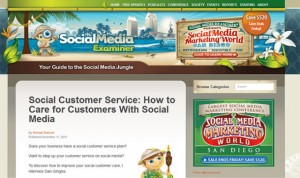Want to create a successful career in graphic design? If that’s a definite yes, you’ll love today’s post. In a few paragraphs, we go over the areas you must cover to become the kickass graphic designer employers love.
Whether you are a freelancer or want to work for the man, the tips in today’s post will come in handy. The advice will also help whether you’re a novice or a working graphic designer looking to climb the ladder.
But first things first, what is graphic design for the sake of the tenderfeet among us?
What is Graphic Design/What Do Graphic Designers Do?
According to the Interaction Design Foundation, graphic design is “…the craft of creating visual content to communicate messages. Applying visual hierarchy and page layout techniques, graphic designers use typography and pictures to meet users’ specific needs. [They] focus on the logic of displaying elements in [illustrative] designs to optimize the user experience [and pass the brand message].”
In layman’s language, a graphic designer is an expert at creating visuals that communicate the company’s messages to the target audience.
Graphic designers create design assets such as logos, icons, website concepts, business cards, interfaces for apps, color palettes, packaging, signs, infographics, print ads, storyboards, stickers, book covers, and posters, among others.
Nowadays, graphic designers use modern software programs such as Adobe Photoshop, Illustrator, and Corel Draw, among others. In the past, that was different. For years, it’s been the graphic designer’s job to create visuals that pass the client’s vision to the customer.
Is there Money in Graphic Design?

You bet there is! Of course, the amount you take home at the end of the year depends on your experience, location, skills, and passion, whether you’re a freelancer or working for a design agency.
Are there specific numbers? Yes. A report by ZipRecruiter says that graphic designers earn an average annual salary of $ 53,530 worldwide. The same report says some graphic designers earn as high as $ 102,500 per year, which is not bad at all.
Again, your earnings depend largely on location and experience. If you’re a freelancer, your salary depends not on location (since you can work from anywhere in the world), but the type of clients you have, as well as the amount and quality of work you put in.
From data, graphic design is a lucrative business, and seeing as companies will always need graphic designers now, and in the future, you can only expect the opportunities to grow.
However, you can expect to face strong competition since, according to the U.S. Bureau of Labor Statistics, “employment of graphic designers is projected to grow 3 percent from 2018 to 2028, slower than the average for all occupations.” To the uninitiated, this means there will be stiffer competition for the available positions.
Still, graphic design is as lucrative as it is exciting. It’s the perfect career choice for passionate creatives, no matter your previous job experience. If you are willing to put in the work and learn the ropes, you can build a successful graphic design career in a few months.
If you’ve read this far, below, you’ll find all the tips you need to create a successful career in graphic design. Let me know your thoughts in the comments at the end.
Best Tips for Creating a Successful Career in Graphic Design
There is no “one true path” to creating a successful career in graphic design. There are a variety of routes you can take, but at the end of the day, the following tips are priceless, no matter the road you follow.
Pursue Formal Education

Some of the top graphic designers in the industry are self-taught. Still, formal education, such as a degree in digital media, is the easiest route into a successful graphic design career.
Did you know that a graphic design student named Carolyn Davidson designed the Nike swoosh logo in 1971 for $ 35?
$ 35 back in 1971 is equivalent to $ 223 in 2020. Still, I am sure you wouldn’t charge Nike a measly $ 220 to design a logo today since we can all agree with the immense value of the Nike logo as far as business goes. I would go for $ 50,000 or more if Nike came my way, but that’s just me.
Back to the point…
Earning a degree is not all about getting the job – a formal education offers you a strong educational background, giving you a firm grasp of the basic principles of graphic design. Additionally, employers require a university degree in a relevant field (again, such as digital media) during interviews.
If you cannot join a university for some reason (say, you’re already working as a junior graphic designer and don’t have the time to attend school), you can always spring for online graphic design courses. You can sign up on websites such as Alison, Coursera, and Edx, among others, to learn graphic design at your own pace.
Keep in mind that you need expertise in graphic design software, so – on top of formal or online education – strive to learn as much as you can about graphic design software.
Gain Relevant Graphic Design Experience

Potential employers will require years of experience alongside a university degree. But how do you gain years of graphic design experience, especially as a beginner? There are many ways of killing a rat, as they say, and earning experience is all about practicing the different things you learn as you start or grow your career.
So how do you put the knowledge you learn at school, work, or online courses to practice?
For starters, you can gain invaluable hours of experience and extra income via freelancing. Even if you’re still in school, don’t shy away from the idea of taking on freelance gigs on the side. Who knows? You might end up working as a freelance graphic designer, depending on how things turn out.
If you’d like to get a salaried job, freelancing can offer you the experience you need to wow employers during and after the interview. Besides, freelancing gigs can provide the money you need to eat as you wait for a salary.
What if freelancing isn’t exactly your cup of tea? There are other options available to you (remember, many ways to kill a rat?).
You can get an internship position with your favorite design agency. An internship is a perfect avenue to try the waters and gain real-world experience. At times, an internship position may transition into a full-paid full-benefits job, meaning you can kill two birds with the same stone.
You can gain experience that you can use to get a job with the same or different company. If the company that offered you the internship doesn’t offer you a job, you can move on to the next company, and use the internship as a stepping stone to your dream job.
Other than that, you can volunteer to gain experience. You can work for a charity close to your heart pro bono to gain experience. If you play your cards right, you might even end up landing a job with that specific charity or a separate non-profit or for-profit organization all from your volunteer work. Here’s an example ad for a volunteer graphic designer job.
Other than that, you can start a side project, create your graphic design assets, and sell on marketplaces such as Creative Market and Envato, among other places. If you put in the effort and build remarkable assets, you can make a killing as a freelance graphic designer.
Build a Graphic Design Portfolio

A portfolio is a must-have for any creative who wants to be a successful graphic designer. If you’re the perfect newbie, a portfolio is the sum total of your work. It allows you to showcase your previous work, current projects, and tell your story. Perch a blog on it, and you can become an expert in your field by sharing tips and so on.
In other words, a graphic design portfolio is the perfect creative window to the world. It helps you to show off your talents, share tips, and open doors for collaboration, which includes new job opportunities. The best part is there a million and one tools that help you to create a portfolio easily.
You can quickly create a graphic design portfolio website using WordPress, Wix, Squarespace, and Weebly, among other site builders. If you don’t have the skills or time to build a website from scratch, you can opt for a portfolio platform such as Behance and Dribbble, among others.
Network with Peers & Like-Minded People)
We often think of peers as competitors rather than collaborators. After all, we are vying for the same job. But, reject envy if you want to be successful. Your peers can be a source of extraordinary growth even within the same organization.
The project a team member rejects could be your saving grace – the very thing that gets the boss to notice your exceptional skills. But the next guy won’t share if you aren’t friends, hence networking. Work on those relationships, and please be humble. In other words, work on developing real relationships with your peers.
Don’t shy away from networking on social media networks and attending graphic design events. A simple “graphic design events” search in Google should suffice. If you’re already working, check with your employer. Many companies offer fully paid opportunities to attend conferences and networking events.
Hone Your Soft Skills
Graphic design is not an isolated career. You’ll work with a large group of collaborators daily, and it pays to be pleasant. As such, it’s crucial to sharpen your interpersonal and soft skills. If that’s not the case (say, you work from home), clients love reliable and consistent graphic designers.
For this very reason, you should strive to develop your soft skills, including:
- Communication skills
- Resilience for those odd hours when clients criticize your work
- Time management
- Negotiation skills
- Teamwork
- Relationship management
- Multitasking
- Et cetera, et cetera
While having a good grasp of graphic design software and other technical skills is excellent, soft skills will help you to go from average to the crème de la crème of the graphic design industry. After all, business is conducted between people and not computers, meaning people skills are vital in this business.
Keep Learning and Going
Do you want to be obsolete as a graphic designer? I can bet all my money, that’s not what you want. How do you stay up to date? You keep up with the latest graphic design trends and techniques. On top of that, you keep tabs on where graphic design is going in the future.
Also, you follow regularly updated graphic design blogs and subscribe to your favorite graphic designers. As a bonus, contact the top graphic designers you love and let them know you love their work. It will broaden your network and open job opportunities for you. Who knows? Your hero graphic designer might be looking for the skills you offer.
Don’t get comfortable in the knowledge or skills you already possess; keep learning and going forward. Never stop – no matter how many obstacles you face. That’s how winning is done!
What are your views? Let us know in the comments below—cheers to a successful graphic design career.
Digital & Social Articles on Business 2 Community
(43)
Report Post




